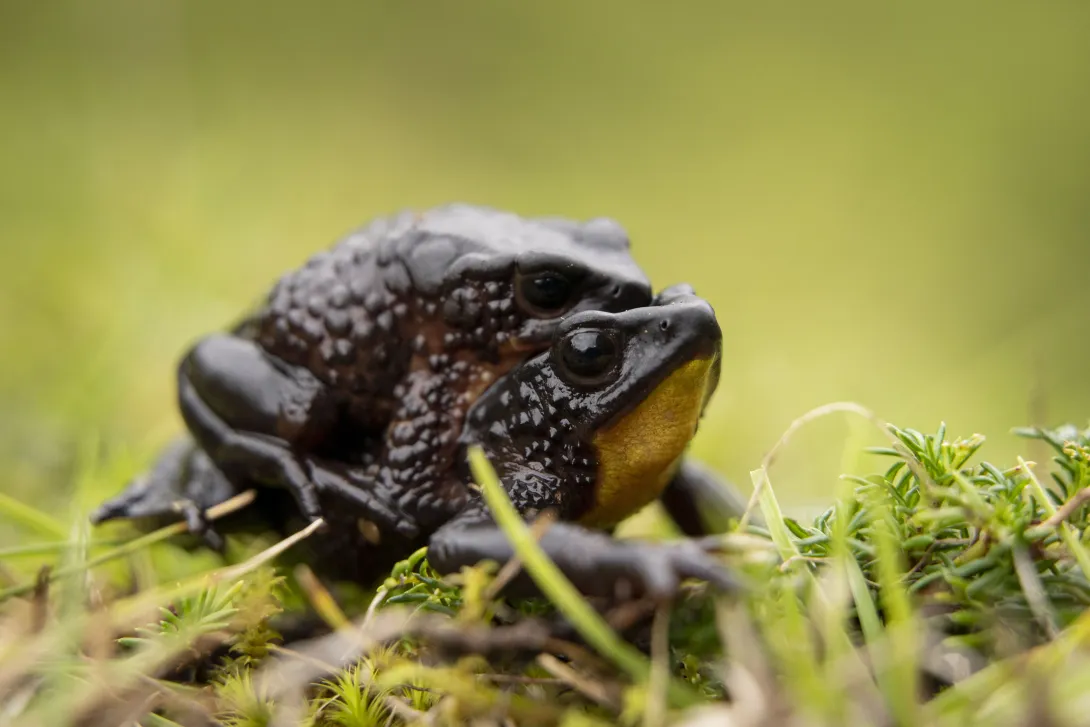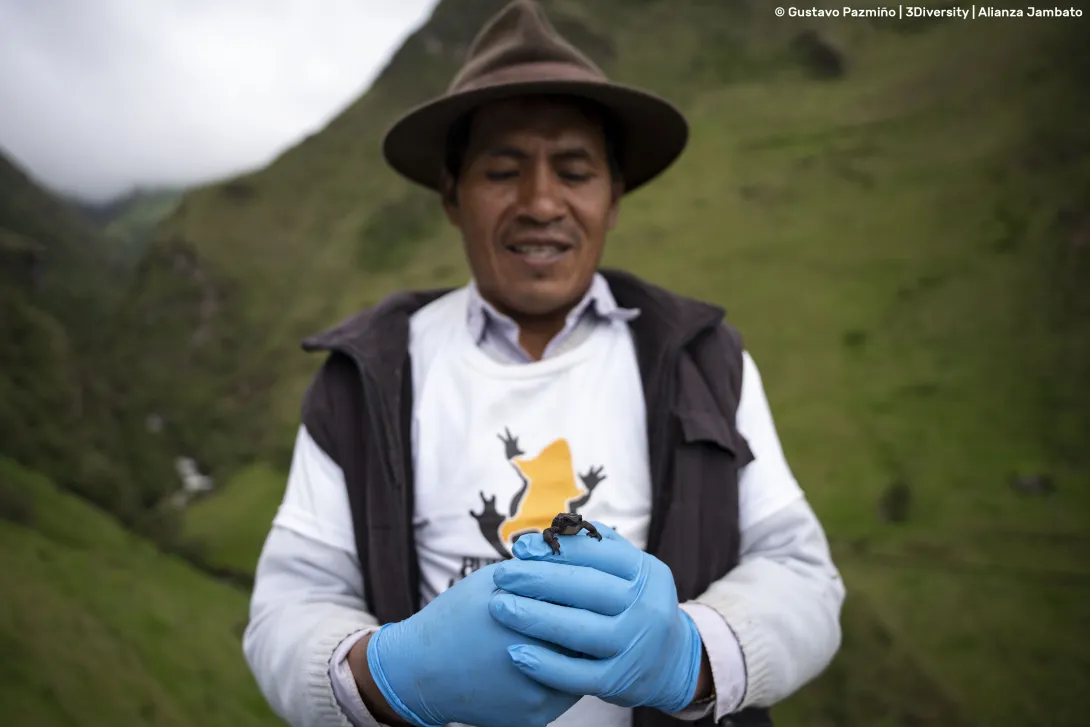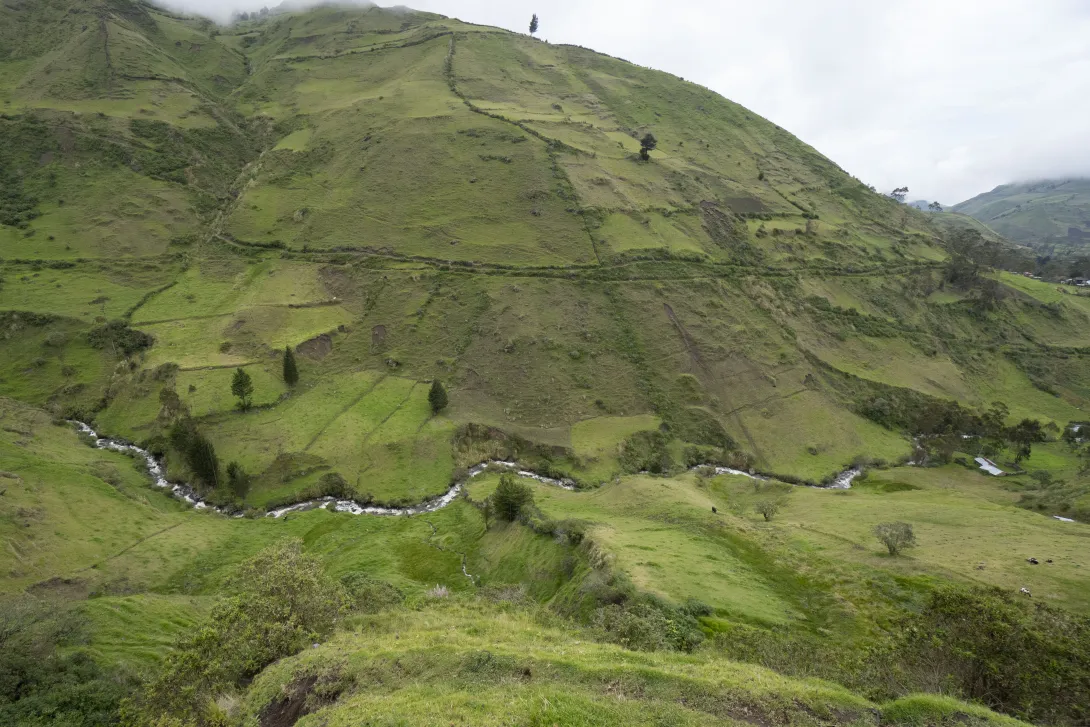Safeguarding a Second Chance: Alianza Jambato Expands Key Biodiversity Area for Critically Endangered Harlequin Toad
Alianza Jambato, an organization committed to the conservation of threatened biodiversity, has proposed a crucial amendment to the Angamarca Jambato Key Biodiversity Area (KBA) in Ecuador. This strategic expansion is designed to ensure the long-term survival of the Critically Endangered Jambato Harlequin Toad (Atelopus ignescens) by officially incorporating the complete micro-watersheds essential for its reproductive success and adult life cycle.

- Securing the Species’ Refuge: The Jambato Harlequin Toad, once thought to be extinct until its rediscovery in 2016, survives in Angamarca, its last known refuge in the central Andes of Ecuador.
- Comprehensive Conservation: The expansion supports integrated management to mitigate threats like habitat degradation, water contamination, and infrastructure development, while also facilitating the securing of long-term funding.
-
Community-Informed Science: The amendment was proposed and reviewed by Alianza Jambato, the original proposers of the KBA, reflecting updated information and local, on-the-ground realities.

The Jambato Harlequin Toad (Atelopus ignescens), a once-abundant species across the Ecuadorian Andes, suffered a devastating population crash in the 1980s, largely attributed to the deadly fungal disease chytridiomycosis and compounded by habitat loss and climate change. For nearly three decades, it was feared extinct until a small, relict population was fortunately discovered in 2016 in the Angamarca Valley, Ecuador. This remarkable rediscovery ignited new hope and led to the creation of the Angamarca Jambato KBA, led by Alianza Jambato Foundation.
Alianza Jambato, formed by a coalition of researchers and conservationists, has been actively monitoring this last known wild population. Their latest initiative proposes a vital update to the KBA’s delineation to enhance protection for this iconic amphibian.
A Strategic Boundary Expansion
The proposed amendment focuses on an expansion of the current KBA boundary to include the micro-watersheds where A. ignescens has been consistently recorded. This proposal is not a simple geographic adjustment; it is an ecologically driven measure to capture the full scope of the species’ habitat needs.
Field observations confirm that these micro-watersheds serve as key reproductive sites for the species, with tadpoles and metamorphs frequently found in the streams. This presence suggests a strong, critical link between successful reproduction and the quality of local water. Furthermore, adult toads are consistently observed near riverbanks within these same micro-watersheds, highlighting the necessity of protecting both the aquatic and adjacent terrestrial habitats that support the species through its entire life cycle.
The new site delineation uses hydrological units, specifically following the boundaries of the Guambaine watershed, derived from Digital Elevation Model (DEM) analysis and verified by field occurrence data. By adopting a watershed-level approach, the amendment ensures that conservation efforts can be truly integrated, addressing threats like water contamination from upstream sources and infrastructure development that might compromise habitat connectivity.
Conservation in Action and Partnership
The Angamarca Jambato KBA, already recognized as a Alliance for Zero Extinction (AZE) site, is critically important for global biodiversity. The KBA’s original proposal was based on the presence of the Critically Endangered toad, applying criteria such as A1a and B1 of the Global KBA Standard.
The ongoing work of Alianza Jambato, which includes a strong focus on community-based conservation, is integral to this effort. The organization actively collaborates with the local community and authorities in Angamarca, promoting environmental education, capacity building, and incorporating traditional knowledge. This partnership is critical, as the toad persists in a complex landscape marked by agricultural use and human intervention. The proposed adjustment, developed by Alianza Jambato’s technical and field coordination teams, reflects this deep, on-the-ground knowledge.

This strategic boundary expansion will not only better capture the ecological requirements of A. ignescens but will also significantly strengthen efforts to protect water quality, mitigate threats, and secure long-term funding for this critically endangered amphibian and the unique Andean riverine ecosystems it calls home. It aims to transform the KBA into a resilient management unit focused on the ecological and long-term viability of the species.